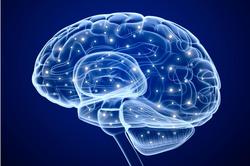
One of the most exciting developments in our understanding of the brain in the last two decades is the discovery of something called neuroplasticity, “neuro” meaning brain and “plasticity” meaning changeability. In other words, scientists have discovered that your brain is a lot like a never-ending game of Tetris, constantly laying down new pathways based on your experiences.
To explain how it works, brain scientists have a saying: Neurons that fire together, wire together.
If you’re wondering what a neuron is and why it’s on fire, here’s what that means. A neuron is a brain cell, and when brain cells get activated at the same time by something you see or hear or smell or whatever, they release chemicals that help strengthen the connection between those neurons. For example, when you eat something delicious, your brain releases dopamine, a chemical that makes you feel good. Or if you hold hands with someone you care about, your brain releases a chemical called oxytocin, which helps you bond with people.
So if every time you went to visit your Uncle Carl he gave you a big hug and then took you out for ice cream, you’d probably start feeling pretty great about Uncle Carl, since your brain would build pathways connecting Uncle Carl with feeling happy and loved. You have these kinds of brain pathways for all sorts of things: riding a bike, eating a sandwich, and walking the dog. And when a person looks at porn, their brain creates new pathways for that, too.
Just like other addictive substances, porn floods the brain with dopamine. But since the brain gets overwhelmed by the constant overload of chemicals that comes with consistent porn use, it fights back by taking away some of its dopamine receptors — which are like tiny ears on the end of a neuron that hear dopamine’s message.
With fewer receptors, even if the brain is putting off the same levels of dopamine in response to porn, the user can’t feel dopamine’s effect as much. As a result, the porn they were looking at doesn’t seem as arousing or exciting, and many porn users go hunting for more porn or more hardcore porn to get the effect the old porn used to offer.
As a frequent porn user’s brain acclimates to the new levels of dopamine flooding through it, regular activities that would normally set off a burst of dopamine and make the person feel happy aren’t strong enough to register much anymore, leaving the user feeling down or uneasy whenever they go for a while without looking at porn. That’s one reason why pornography can be so addictive.
Once addiction sets in, the user has a whole new set of problems, because addiction damages the part of the brain that helps you think things through to make good choices—the brain’s limit setting system. For more than 10 years, studies have shown that drug addictions can cause the brain’s frontal lobes to start shrinking. While “frontal lobe” sounds really technical, basically it’s the part of the brain that controls logical problem solving and decision making. But recent studies have found that it’s not just drugs that cause that kind of damage—the same problems show up with other kinds of addictions, such as overeating, Internet addictions, and sexual compulsion.
And here’s the really scary part: the more porn a person looks at, the more severe the damage to their brain becomes and the more difficult it is to break free. But there’s good news too: neuroplasticity works both ways. That means that the damage to the brain can be undone when someone gets away from unhealthy behaviors.
This post is taken from the website, http://www.fightthenewdrug.org
Citations to support the statements in this post are available upon request.
 RSS Feed
RSS Feed